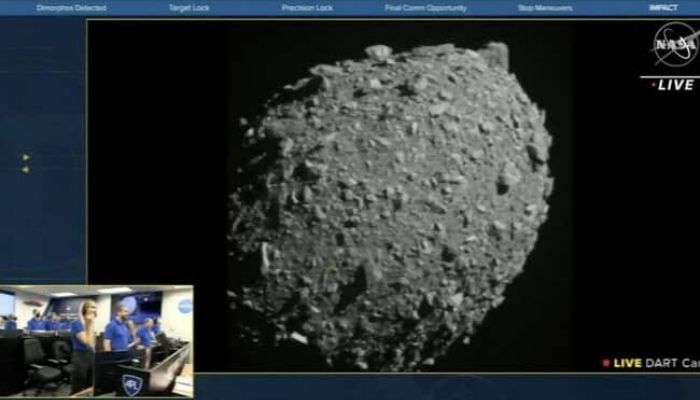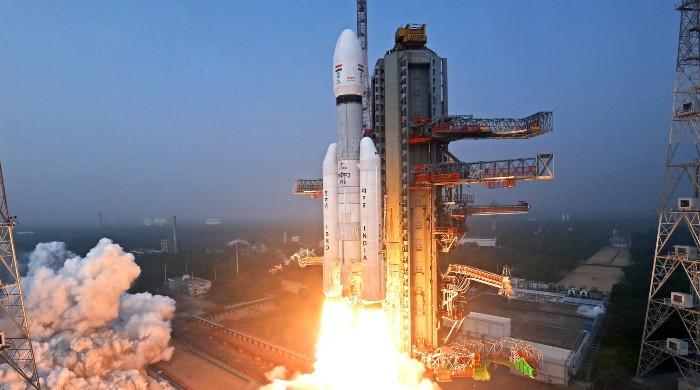WATCH: NASA's spacecraft slams into asteroid in first planetary defence test
Cheers erupted from control room as images of target asteroid grew larger and ultimately signal was lost, confirming spacecraft had crashed into Dimorphos
September 28, 2022

- Event comes in first test of planetary defence system.
- Designed to prevent potential meteorite collision with Earth.
- Humanity's first attempt to alter asteroid motion played out live.
Humanity's first attempt to alter the motion of an asteroid or any celestial body played out in a National Aeronautics and Space Administration (NASA) webcast from the mission operations centre outside Washington DC, 10 months after DART was launched.
NASA's DART spacecraft successfully slammed into a distant asteroid at hypersonic speed on Monday in the world's first test of a planetary defence system, designed to prevent a potential doomsday meteorite collision with Earth.
The livestream showed images taken by DART's camera as the cube-shaped "impactor" vehicle, no bigger than a vending machine with two rectangular solar arrays, streaked into the asteroid Dimorphos, about the size of a football stadium, at 7:14 pm EDT (2314 GMT) some 6.8 million miles (11 million km) from Earth.
DART, launched by a SpaceX rocket in November 2021, made most of its voyage under the guidance of NASA's flight directors, with control handed over to an autonomous on-board navigation system in the final hours of the journey.
Monday evening's bullseye impact was monitored in near real-time from the mission operations centre at the Johns Hopkins University Applied Physics Laboratory in Laurel, Maryland.
Cheers erupted from the control room as second-by-second images of the target asteroid, captured by DART's onboard camera, grew larger and ultimately filled the TV screen of NASA's live webcast just before the signal was lost, confirming the spacecraft had crashed into Dimorphos.
The $330 million mission, some seven years in development, was devised to determine if a spacecraft is capable of changing the trajectory of an asteroid through sheer kinetic force, nudging it off course just enough to keep Earth out of harm's way.









